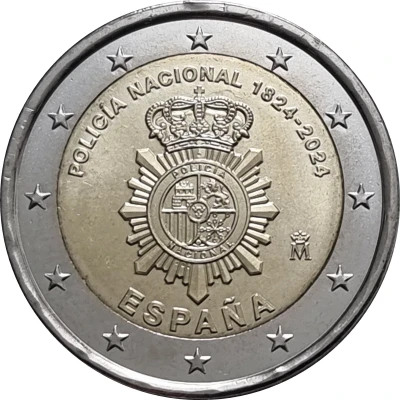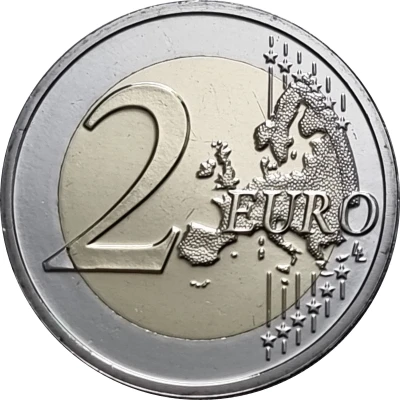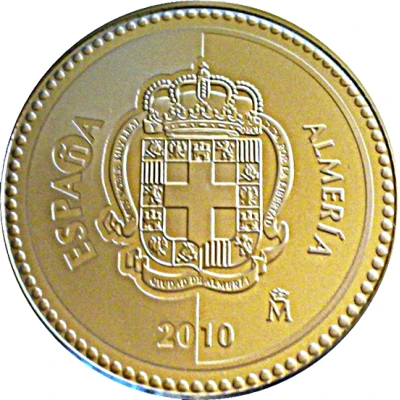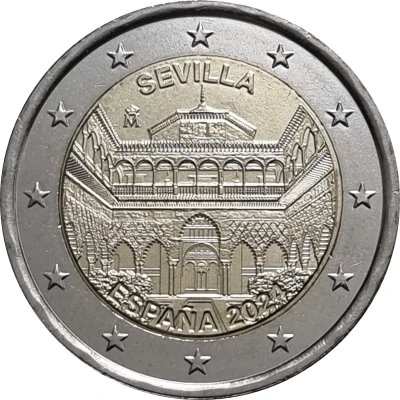
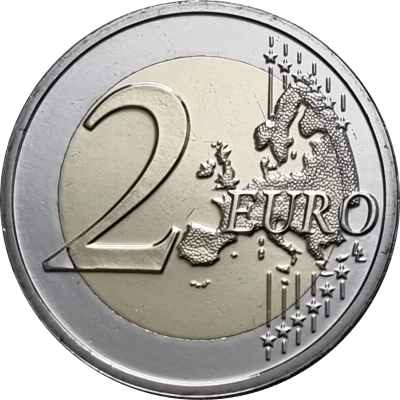

2 Euros Seville
2024 year| Bimetallic: nickel brass clad nickel centre in copper-nickel ring (Core: 75% Cu, 20% Zn, 5% Ni Ring: 75% Cu, 25% Ni) | 8.5 g | 25.75 mm |
| Issuer | Spain |
|---|---|
| King | Felipe VI (2014-date) |
| Type | Circulating commemorative coin |
| Year | 2024 |
| Value | 2 Euros 2 EUR = USD 2.20 |
| Currency | Euro (2002-date) |
| Composition | Bimetallic: nickel brass clad nickel centre in copper-nickel ring (Core: 75% Cu, 20% Zn, 5% Ni Ring: 75% Cu, 25% Ni) |
| Weight | 8.5 g |
| Diameter | 25.75 mm |
| Thickness | 2.2 mm |
| Shape | Round |
| Technique | Milled |
| Orientation | Medal alignment ↑↑ |
| Updated | 2024-10-07 |
| Numista | N#401373 |
|---|---|
| Rarity index | 13% |
Reverse
Map of Europe symbolizing the gathering of the fifteen nations of the European Union and twelve stars (six above and six below map).
Script: Latin
Lettering:
2 EURO
LL
Designer: Luc Luycx
Edge
The sequence "2 ★ ★" repeated six times alternately upright and inverted
Script: Latin
Lettering: 2 ★ ★ 2 ★ ★ 2 ★ ★ 2 ★ ★ 2 ★ ★ 2 ★ ★
Comment
Spain started the commemorative coin series “Patrimonio de la Humanidad de la UNESCO” (UNESCO World Heritage) in 2010, commemorating all of Spain's UNESCO World Heritage Sites, which could continue until 2050. The order in which the coin for a specific site is issued coincides with the order in which they were declared a UNESCO World Heritage site.
The Real Alcázar of Seville is a walled palace complex built in different historical stages. The original palace was built in the Early Middle Ages. Some vestiges of Islamic art are preserved and, from the period after the Castilian conquest, a Mudejar palatial space and another in the Gothic style. In later reforms, Renaissance, Mannerist1 and Baroque elements were added. It is the residence of the members of the Spanish royal family when they visit Seville. This makes it the oldest royal palace in use in Europe. Unesco declared it a World Heritage Site, along with the Cathedral of Seville and the Archive of the Indies, in 1987.
The “Patio de las Doncellas”, translating to "The Courtyard of the Maidens," derives its name from a legendary tale suggesting Muslim rulers demanded an annual tribute of 100 virgins from Christian kingdoms in Iberia. Constructed as part of Pedro I's Mudéjar palace in the 1360s, the courtyard's lower level retains its original architecture, featuring Arabic inscriptions referring to Pedro I as "Sultan Don Bidru." Charles V later added an upper story in the Italian Renaissance style, adorned with both Renaissance and Mudéjar plasterwork. The courtyard boasts a rectangular reflecting pool flanked by promenades, embellished with red brick pavement and green ceramic borders. Flowerbeds line the pool, adorned with a frieze of interlaced semi-circular arches. A 21st-century reconstruction restored the courtyard's original appearance, revealing its hidden Mudejar garden after excavations conducted between 2002 and 2005.
Interesting fact
One interesting fact about this coin is that it features a unique bimetallic design, with a nickel brass clad nickel center surrounded by a copper-nickel ring. This distinctive design element sets it apart from other coins and makes it a standout piece in any collection.
Price
| Date | Mintage | VG | F | VF | XF | AU | UNC |
|---|---|---|---|---|---|---|---|
| 2024 M | 6500 | - | - | - | - | - | - |
Values in the table are based on evaluations by sales realized on Internet platforms. They serve as an indication only for 2 Euros (Seville) 2024 coin.
